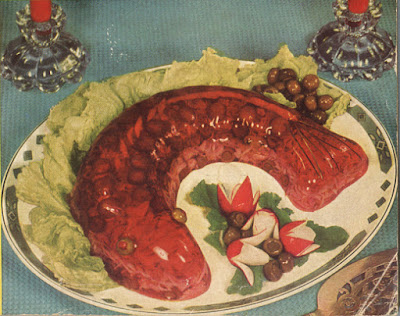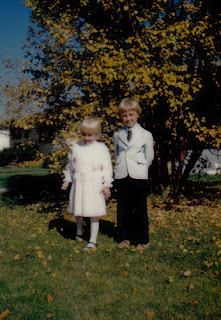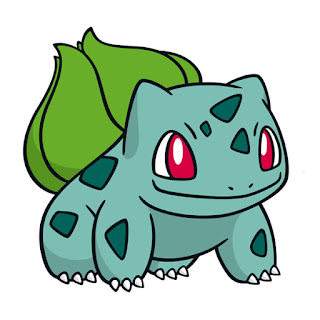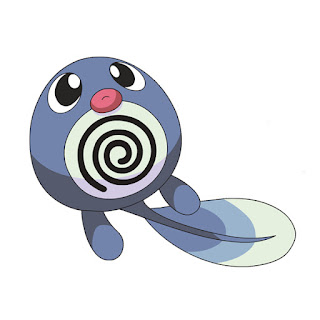This is a serialized version of my novel Bus People, a story of the people who live on Vancouver’s Downtown Eastside. The main character, Dr. Zoltan Levy, is loosely based on author and lecturer Dr. Gabor Mate. It's a fantasy and not a sociological treatise: meaning, I don’t try to deal with “issues” so much as people who feel like they’ve been swept to the edge of the sidewalk and are socially invisible/terminally powerless. I’m running it in parts, in chronological order so it’s all there, breaking it up with a few pictures because personally, I hate big blocks of text.
Bus People: a novel of
the Downtown Eastside
Part One
"No one is as capable of gratitude as one who has emerged from the kingdom of night." Elie Wiesel
PROLOGUE: The man with no face
Part One
"No one is as capable of gratitude as one who has emerged from the kingdom of night." Elie Wiesel
PROLOGUE: The man with no face
The man with the Elephant Man veil over
his head is a regular on the Number 42, getting on every day at 9:47 a.m.
Same time, same place. Broadway and Granville, heading north over
the bridge towards the Downtown Eastside.
Everyone is curious as to what he looks like
under the veil. It’s more of a burqa,
actually, veil implying something translucent, something gossamer, whereas this
is more of a blanket over his head, without any eye holes in it, because you
see, this man doesn’t have any eyes.
Eyes?
Hell, he has no face.
Once he had a face, but he blew it off one
day in a fit of rage. Rage at life, that
it could be so mean, so ungenerous to a man as talented as he.
An artist.
Maybe even a genius.
Living in a garret. It was more
of a studio, in fact, a big open airy loft with beautiful natural lighting,
where he both lived and worked, painted and ate and slept and had sex, wept and
raged when the work was not going well and the rent was overdue and his
girlfriend complained that he never took her anywhere, which was true, danced
heavily in his steel-toed work boots when a painting sold somewhere, even in a
tacky restaurant for peanuts, because it was nevertheless proof that yes,
he, Szabó, could make a living at this, that against the odds, and in spite of
everything his father had said to him, he could be an Artist.
His father used to curse at him in
Hungarian, tell him he was good for nothing, that he should have a trade, or at
least a job, a proper job digging a ditch, it didn’t have to be anything grand,
his grandfather dug potatoes all his life, and look at him, wise man, fourteen
children, he lived a great life, but to be an artist, surely that was a dream
for fools, it was impractical, he would never make a mark, he would never sell
a painting, he was living in a world of illusion, and sooner or later it would
all catch up with him, reality would close in, and he would realize that his
father had been right, that he should have gotten an education, that he should
have learned a trade, that he should have prepared himself for life, instead of
letting life just happen to him.
One flicked match, and the dream was
over. The studio went up like a torch,
and with it approximately 297 paintings, his entire life’s work. His oeuvre, gone in an instant,
irretrievable. Szabó did not believe in
insurance, and at any rate, how can you insure genius? How to replace the irreplaceable, the
inspiration of the moment, mysterious and unfathomable as life itself? So – ploomphth - there went all his canvasses up in flames, all
those carefully-wrought works stuck with eggshell and coffee grounds and sputum
and semen and even his own blood, torched up to the ceiling in a cloud of
greasy smoke: “like the smoke from the
crematoria at Auschwitz,” Szabó was to tell the therapist later on, back when
he could still talk, when he still had a jawbone and teeth and a tongue.
In the Old Testament, Moses keeps such
close company with Yahweh that his face shines unnaturally, giving off an eerie
light in a way that he fears will frighten his fellow believers. So he veils himself, covers the radiance to
tone it down. Szabó’s veil has a more
practical purpose. It is meant to hide
the evidence of despair.
It is meant to hide the evidence of a
failed attempt to die. Propping a
shotgun against your chin is a bad way to do it, Szabó; you could miss your
brain, blow your face completely off instead, and, in an ultimate act of wicked
self-punishment for the sin of trying to throw away the irreplaceable gift of
your life, survive.
For Szabó did not see, in that moment, in
that immutable instant that would change his life forever, that he was
the gift. Szabó believed, mistakenly,
that the gift was in those paintings, that the hoarded treasures rolled up and
stacked up in his storage room were in fact his worth and his life.
Such fragile belief. Such a thread to hang a life from. Snap, goes the thread. It all comes down, because Szabó couldn’t see.
It was not a good scene at the
hospital. All the nurses and attendants,
from the paramedics on down, even as they shoved tubes down his throat to keep
him breathing, even as they started the IV, all wished fervently that he would
just expire, and quickly too. Any other
result did not bear thinking about. The nurses whispered and murmured to each
other, half-ashamed of themselves for the things they were thinking, the things
they were saying.
All the while his heart kept beating,
steadily, steadily. Szabó was not ready
to die. As it turned out, he had missed
his brain completely. Though the front
of his head was one big ooze, practically a crater, with only vestigial jaw
left, and a bit of facial bone structure, he was literally left without eyes,
nose, chin, teeth, lips, and tongue.
He still had his mind, he still awareness,
he knew what was going on around him.
That was the horror of it; the horror.
His hearing was completely
unaffected. In fact it seemed to have
become more acute, perhaps to compensate for the loss of his eyes. So he could hear all the remarks of the
hospital staff as they worked on him that night: Have you seen this
one? No. Come on, take a look at it.. Oh
God. Sweet Jesus. This is a sad one. Don’t worry, he won’t make it ‘til
morning. Well, let’s hope not. Nobody can live like this.
There was surgery. The doctors did the best they could, which
was not much, tying off blood vessels, packing the huge wound with gauze. They discussed possibilities, queasily: skin grafts?
A face transplant? But such a
thing wasn’t possible. Would it ever be? Wasn’t that just the realm of science
fiction? No one in the ER had ever seen
anything this extreme, not even the plastic surgeon who had put faces back
together into a semblance of normalcy after hideous burn disfigurement and
automotive catastrophe. Still his heart kept on beating, and beating.
He won’t make it ‘til morning.
Are you sure? Look, there’s still a good strong pulse.
My God.
What’s he going to do?
The surgeon, ashamed of himself, prayed
that he would die. He got loaded that
night, just sat there boozing in the murky dawn half-light, then stuck a needle
in his arm, full of Demerol. It wasn’t
the first time he’d done that, but it wouldn’t be the last time, either.
In the morning, Szabó became conscious for
a while, before slipping into a dark and muddy coma, swimming deep in some
subterranean cave of his psyche for several days. He saw his father’s face in
the coma, heard his cranky, complaining voice haranguing him for being such a
failure, he saw his mother Magolna as she looked in her youth, beautiful,
full-lipped and laughing, and he saw other things, things he never wanted to
think about again, seared indelibly into his mind so that they replayed
automatically in this deep state, as if they had been pre-recorded on an
endless loop.
A new nurse came on shift, and began to
feel sick. She was overcome with nausea
at the sight of him. Another almost
fainted and had to be relieved. This was
an experienced nurse, one who could tie off arterial gushers and sling around
bloody afterbirths like they were so many McDonald’s hamburgers, but even she
couldn’t stand the sight of him.
This was as shocking as the case of the
two-headed baby born in Argentina
Szabó lived. Strangely, after the shotgun blast that
annihilated his face forever, he lost the urge to die - which is not to say
that he gained the urge to live, but it was enough, just enough to get him through. Perhaps it would have made sense for him to
swallow cyanide or throw himself in front of a train. Instead, he joined the kingdom of night,
slipped into the realm of the dusk-dwellers, which is where he had always
belonged anyway. Now he was an official
card-carrying member, a member of a strange organization with no organization,
full of heroin addicts and hookers and crazy people living in a twilight
world. Intractible suffering was not a
place visited, but a permanent home. His
passport was his face, or the lack of one.
His white cane thwacking the sidewalk warned everyone in his path to get
out of the way, here comes Szabó, or what’s left of Szabó, the man without a
face, the blind painter who no longer paints because he can’t see the
canvas. Can’t talk because he doesn’t
have a mouth. Can eat, through a feeding
tube; can make sounds, as his larynx is completely intact; can even sing. The spectre of Szabó singing, waving his
white cane back and forth in front of him on a fine spring morning is enough to
send everyone scurrying for cover. Can’t
see; can’t talk; can sing, and seems to know every operatic aria written for
the past 200 years.
Szabó mounts the steps of the Number 42 on
a wet Wednesday morning in the springtime, at 9:47 a.m.
precisely. The bus is on time, for
once. The driver sees him get on, and
thinks: oh, that guy. He’s a regular, all the drivers know about
him, they talk about him sometimes, tell stories, but you don’t know what to
believe. Bert Moffatt the bus driver
feels sorry for Szabó, wonders what deformity lurks under the blanketlike
covering over his head, some cauliflower growth or third eye. Would probably be
sick if he saw the mass of scar tissue that used to be a face, the nose hole,
the hole for the feeding tube, the hint of an eyebrow left, but no eyes. Szabo keeps it covered, he veils himself,
knowing the world is not ready for a man with no face. He sits down on the orange plastic-covered
sideways seat reserved for the elderly and the handicapped, beside a
youngish-looking woman with straw-coloured hair pulled back in a ponytail and a
faded green backpack stuffed full of old junk.
Bus People Part One
Bus People Part Two
Bus People Part Three
Bus People Part Four
Bus People Part Five
Bus People Part Six
Bus People Part Seven
Bus People Part Eight
Bus People Part Nine
Bus People Part Ten
Bus People Part Eleven
Bus People Part Twelve
Bus People Part One
Bus People Part Two
Bus People Part Three
Bus People Part Four
Bus People Part Five
Bus People Part Six
Bus People Part Seven
Bus People Part Eight
Bus People Part Nine
Bus People Part Ten
Bus People Part Eleven
Bus People Part Twelve

















































